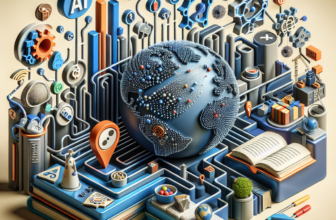The Evolution of AI: How Machine Learning is Revolutionizing Image Generation

The Evolution of AI: How Machine Learning is Revolutionizing Image Generation
Artificial Intelligence (AI) has been a buzzword in today’s technological landscape. From chatbots to self-driving cars, AI has permeated various aspects of our lives. One of the most fascinating applications of AI is in the realm of image generation. The ability of machines to create and manipulate images has seen tremendous progress over the years, thanks to the advancements in machine learning and deep learning algorithms. In this article, we will explore the evolution of AI in image generation and how it is revolutionizing the way we create and perceive images.
The Evolution of AI in Image Generation
In the early days of AI, image generation was a challenging task. The algorithms were limited in their ability to understand and interpret visual data. However, with the advent of machine learning techniques, such as neural networks and deep learning, AI has made significant strides in generating realistic and complex images.
One of the key breakthroughs in AI image generation was the development of Generative Adversarial Networks (GANs). GANs are a class of machine learning models that consist of two neural networks – a generator and a discriminator. The generator creates images, while the discriminator evaluates the realism of these images. Through a process of competition and collaboration, GANs are able to generate high-quality images that are indistinguishable from real ones.
Another significant advancement in AI image generation is the use of convolutional neural networks (CNNs). CNNs are specifically designed to process visual data and have been instrumental in improving the quality of generated images. By leveraging large datasets and powerful GPUs, CNNs have been able to generate highly detailed and realistic images, even in complex scenarios such as generating human faces or landscapes.
The Role of Machine Learning in Image Generation
Machine learning plays a pivotal role in the advancement of AI image generation. Through the use of vast amounts of training data and sophisticated algorithms, machine learning models are able to learn and understand the intricate patterns and structures within images. This allows them to generate new images that are coherent and visually appealing.
One of the key techniques in machine learning for image generation is unsupervised learning. This approach allows the model to learn from unlabelled data and discover meaningful representations of visual information. By learning from the inherent structure of the data, machine learning models can generate novel and diverse images that capture the underlying patterns of the input data.
Furthermore, the use of reinforcement learning has also been instrumental in improving the quality and diversity of generated images. By rewarding the model for generating realistic and diverse images, reinforcement learning incentivizes the model to explore and create new visual concepts. This has led to the generation of highly creative and diverse images that push the boundaries of traditional artistic expression.
The Impact of AI in Image Generation
The advancements in AI image generation have had a profound impact on various industries and creative fields. In the field of design and visual arts, AI-powered image generation has enabled artists and designers to explore novel concepts and styles that were previously unattainable. By leveraging the power of AI, designers can create visually stunning and innovative artworks that push the boundaries of traditional artistic expression.
Moreover, AI image generation has also found applications in the entertainment industry, particularly in the creation of visual effects and computer-generated imagery (CGI). The ability of AI to generate realistic and lifelike images has revolutionized the way visual effects are created, leading to more immersive and captivating movie experiences.
FAQs
Q: What are some common applications of AI image generation?
A: AI image generation has found applications in various fields, including design, entertainment, healthcare, and more. It is used for creating realistic visual effects in movies, generating lifelike characters in video games, designing innovative artworks, and even aiding in medical imaging for diagnostics and treatment planning.
Q: How does AI image generation differ from traditional image editing software?
A: Traditional image editing software relies on manual input and manipulation by the user, whereas AI image generation uses machine learning algorithms to automatically create and manipulate images based on the learned patterns and structures within the data.
Q: Can AI generate original art?
A: Yes, AI has been used to generate original artworks that showcase novel concepts and styles. Through the use of machine learning techniques, AI can create visually stunning and innovative artworks that push the boundaries of traditional artistic expression.
In conclusion, the evolution of AI in image generation has paved the way for groundbreaking advancements in the creation and manipulation of visual content. With the continued progress in machine learning and deep learning techniques, AI is poised to revolutionize the way we perceive and interact with images, opening up new possibilities for artistic expression, entertainment, and other creative endeavors.







